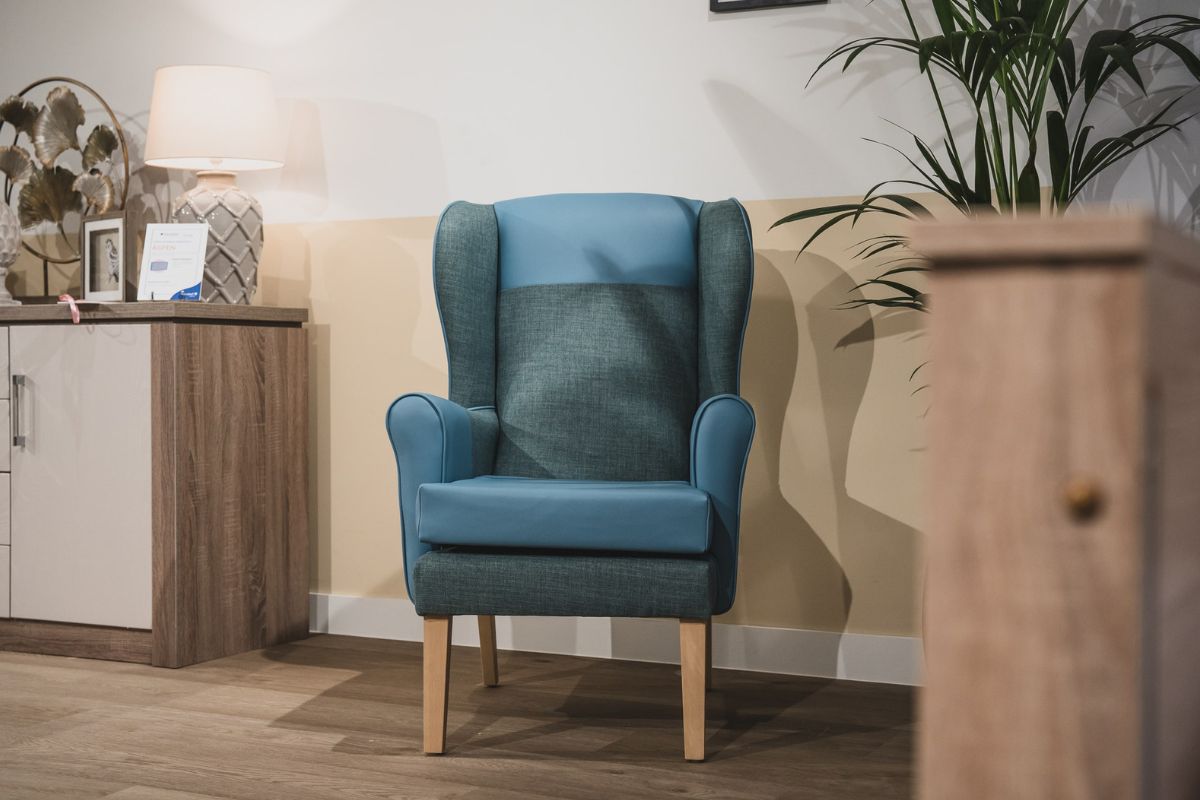Light Reflectance Values (LRVs) – correct guidance for care homes

According to the Royal National Institute of Blind People (RNIB), one in five people aged 75 and over are living with sight loss; or one in two people aged 90 and over.
As stated in Health Building Note (HBN) 08-02, the correct use of Light Reflectance Values (LRVs) can help with wayfinding and orientation for those with dementia or sight loss; and increases a resident’s sense of independence, which in turn promotes dignity and wellbeing.
Want to know the correct use of LRVs for your care home? Keep reading and all will be revealed…
What is an LRV?

Let’s start with a definition. An LRV, or Light Reflectance Value, is a value given to a surface to denote the amount of light it reflects. LRVs are marked on a scale of 1 to 100 depending on the percentage of light reflected. Dark, matt and/or textured surfaces absorb a larger amount of light, and therefore have lower reflectance values.

Remember this: The higher the LRV number, the lighter the colour will appear. The lower the LRV number, the darker the colour will appear.
Are your surfaces correctly contrasted?
This small LRV value, can hugely affect your room depending on how much natural or artificial light your room gets. So, even if you pick a light colour with a high LRV, if you don’t give it light to reflect, it won’t rise to the occasion.
All paint colours, fabrics and flooring materials sold into the health and social care market have an LRV value associated. The comparison of the two gives you an LRV contrast value.
Example: A wall colour has an LRV rating of 70. Your floor material has an LRV rating of 10. Therefore the LRV contrast value between these two opposing surfaces is 60.
Ask your supplier to confirm these LRVs before making a selection.
The two main contrast values that work in care homes:
A LRV contrast value of 30+ is considered a high contrast. A place you want see high contrast in your care home would be between floors and walls, as it helps with diminishing depth perception. In simple terms, this means it helps residents judge when one surface ends and another begins. With this in mind, furniture fabrics and linens should be contrasted from the floor so they too can be easily seen.
A LRV contrast value of less than 10 creates the perception of no depth, or a flat surface. This is perfect for places where you want your residents to move independently such as a bedroom floor and hallway floor.
To help you navigate the complex world of LRVs, we have put together a handy ‘Best Practice’ guide that you can download below:
Quick guide to selecting the correct LRV values
Get in touch
If you have any further questions about how Blueleaf can support you contact us here.
.png)


.png)


